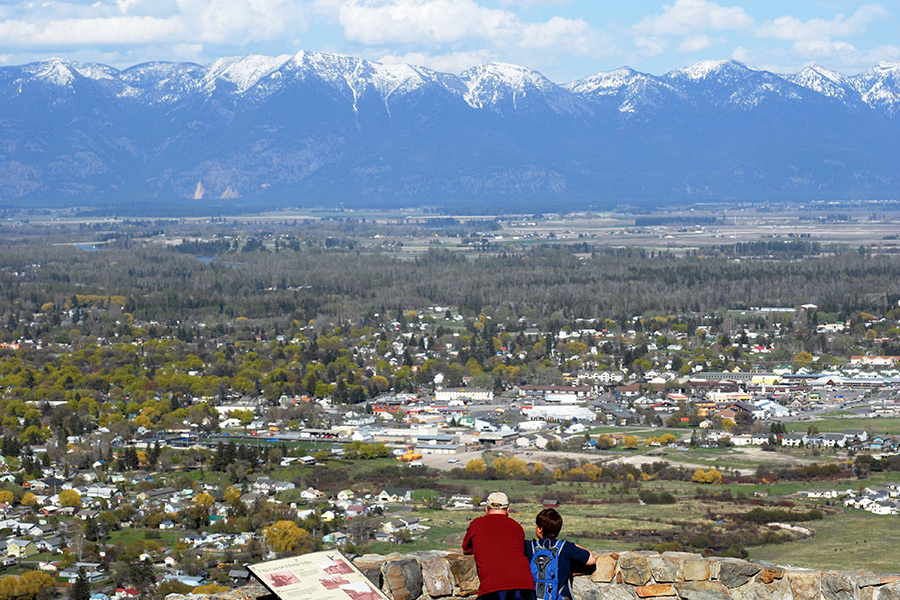Whether your recreational interests center on boat ramps at state parks or buffed-out berms on the state’s growing network of trails, the passage of a new bill to fund Montana State Parks, fishing access sites and a new trails grant program should come as welcome news
Senate Bill 24, introduced by Sen. Terry Gauthier, R-Helena, saw broad support as it moved through the legislative process this past month, even as some lawmakers opposed the optional fee increase from $6 to $9 on light-motor vehicle registrations.
“This is the cost of a beer,” Gauthier told members of the House Fish, Wildlife and Parks Committee last month. “I have taken it for granted. I grew up in the parks as a young guy who didn’t come from a very wealthy family, but I grew up in the parks. It was something we could do with the little amount of money that my parents made. Now it is my responsibility today to take care of future generations and preserve their ability to enjoy the parks, which are wearing out. The number one industry in the state other than agriculture is tourism, and that utilizes our parks. The parks wearing out and we need money.”
The voluntary $3 “opt-out” fee increase will bump up funding for parks, fishing access sites and Virginia City and Nevada City, while a portion of the fee will be used to fund a newly created trails and recreational facilities grant program.
The total fee revenue is expected to rise by about $2 million per year beginning in fiscal year 2021.
The fee on motor vehicle registrations has not risen since 2003 and Gauthier said the $3 increase keeps pace with inflation.
“Six dollars back in 2003 doesn’t buy what six dollars does today,” Gauthier said. “It’s called inflation.”
A coalition of motorized and non-motorized trail users supported the measure, which passed the House April 16 on a 65-31 vote. Last month, it passed out of the Senate on a 32-16 vote.
According to Beth Shumate, the state parks administrator for Montana Fish, Wildlife and Parks, visitation to state parks has increased 33 percent since 2012, and the demands exceed current funding levels.
Meanwhile, a backlog of deferred maintenance at state parks exceeds $23 million, Shumate said.
Montana’s 55 state parks — 13 of which lie in the state’s northwest corner — have an annual operating budget of approximately $9.2 million in fiscal year 2019, 58 of which is through earned revenue as part of of Light Vehicle Registration (LVR), park fees, and enterprise revenue. Montana State Parks currently receives no general fund dollars.
Some of the busiest state parks lie in northwest Montana, including Flathead Lake State Park on Wild Horse Island, which saw 284,713 visits in 2017. That visitation is estimated to have increased since.
Since 2004, Montanans have had the option to support Montana State Parks when they register their vehicles. Light Vehicle Registration is the largest source of funding for Montana’s state parks, and 83 of Montanans choose to support them when they register their vehicles, according to recent figures.
“This is the highest rate of participation since light vehicle registration funding for parks has been instituted,” according to a 2019 repot. “Light Vehicle Registration funding support means no daily entrance fees for residents when you visit your state parks.”
In the early 1990s, the benefits of public trail systems were recognized by the federal government, and the Recreational Trails Program (RTP) was developed to provide states with federal funds to support recreational trail projects via the Federal Highway Administration.
Montana’s RTP is administered by the Parks Division of FWP, and grant applications are solicited each year for trail-related projects statewide. Eligible applicants include local government, private clubs and organizations, as well as federal agencies. The potential projects involve motorized, nonmotorized, urban, back-country, snowmobile trail grooming, and virtually any other variation of trail-related project needs.
Annually, approximately 60 individual grants are awarded totaling between $1.3 and $1.6 million.
Bob Walker, chair of the Montana Trails Coalition, said supporting the fee increase will ensure that parks and trails receive the attention they deserve.
“Why did we tie our horse up to FWP and the parks division?” he said. “Because they are mandated by law and in their mission statement to provide for the stewardship of fish, wildlife and parks and the recreational resources of Montana. This is a pay-to-play program. People pay optionally on their motor vehicle registration, and they get to play.”
